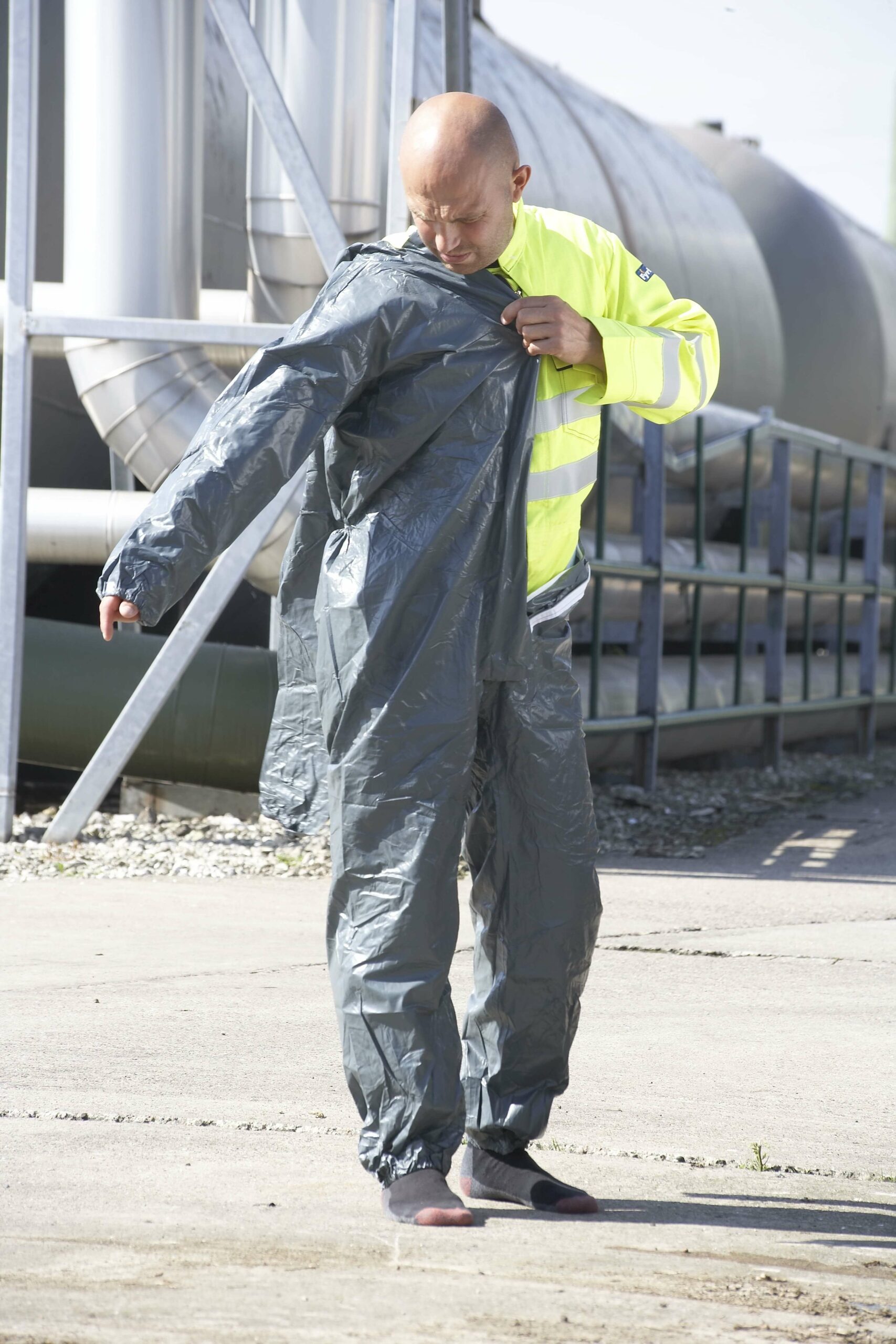When it comes to FR protection, there are multiple FR standards which can potentially lead to confusion for safety managers and workers. Some standards are based on application-specific requirements such as arc and welding protection, but there are two main standards for FR clothing: EN 14116 and EN 11612.
EN 14116 applies to secondary FR protection – PPE that meets this standard is worn by workers to provide additional, other protection, such as against chemicals, over their FR workwear without compromising flame and heat protection. EN 11612, on the other hand, is the standard relating to primary FR clothing. This standard outlines performance requirements for garments made from flexible materials designed to protect the body (except the hands) from heat or flame.
The Fabric Shrinkage Test (EN17493)
EN 17493 – the fabric shrinkage test – is designed to measure a fabric’s resistance when exposed to hot air or flame.
The test is important because air trapped between an FR garment and the wearer’s body insulates against heat energy, but when garments shrink as a result of exposure to heat, the garment’s resistance to heat energy is further reduced.
To pass the test, the FR garment must not shrink by more than 10%. First, the garment is measured before being placed in a hot air circulated oven, heated to 180o°C (with an option to test at 260o°C). The garment is then left for five minutes before being measured again to determine shrinkage.
What do safety managers need to bear in mind?
As mentioned, the air trapped between an FR garment and the wearer’s body insulates against heat energy; so if the garment is too tight, there will be no layer of air to protect the wearer. With this considered, safety managers should opt for slightly looser clothing, ensuring air flows freely through the suit, and ensure garments have less than 5% shrinkage.
The Vertical Flammability Test (ISO 15025)
ISO 15025 – the Vertical Flammability Test – measures a fabric’s response to contact with a flame. The test involves applying a flame to a 200mm x 160mm sample of fabric (suspended vertically) for 10 seconds. There are two test methods, which are detailed below:
Procedure A
Flame is applied to the center of the fabric
Procedure B
Flame is applied to the bottom edge of the fabric
To pass (in both instances) any holes formed must be less than 5mm, if the fabric ignites, it must not burn to its edge and the fabric must not produce any burning debris, i.e. molten droplets.
What do safety managers need to bear in mind?
Certification of a garment requires a pass on the fabric shrinkage test and a pass on either procedure A or B of the vertical flammability test. This considered, safety managers should carefully assess garments to see if they have passed both tests. On a garment label, procedure A will be indicated by “A1” and procedure B will be indicated by “A2”.
Heat Energy Resistance
EN 11612 includes five heat energy resistance tests which measure a fabric’s ability to resist the transfer of heat energy from the outside to the inside.
However, garments tested under EN 11612 only need to pass (i.e. minimum of Class 1) one of the tests in order to be certified (the manufacturer may select the test most appropriate for the intended use of the garment). Testing to more than one of these five tests is optional.
These tests relate to the five main types of heat energy transfer: radiant, convective, contact, with splashes of aluminum and splashes of iron to represent molten metal splashes. In the radiant, convective and contact heat energy tests, results are classified based on the time taken for the sensor behind the fabric to record a specific increase in temperature (24oC for radiant and convective and 10o°C for contact) that equates to a 50% probability of a 2nd degree burn. The longer it takes to reach such a temperature, the higher the garment’s class and the higher the level of protection against that type of heat energy transfer it provides.
What do safety managers need to bear in mind?
To be certified, a garment only needs to be tested to one of five heat energy resistance tests, so safety managers need to assess the suit against its intended purpose. There is little point in providing workers with a garment that achieves class 3 in a radiant heat test if the intended application involves contact heat.
In addition, while many users are aware of EN 11612, others are not aware of the details within it – more specifically how the different heat resistance tests (and subsequent garment classifications) can aid garment selection and comparison. Safety managers should, therefore, consider which heat type they need to protect against and to what level of heat resistance a garment is tested/classified.
Thermal Mannequin Testing
Perhaps the most useful indication of the effectiveness of a garment to protect – especially against a flash fire – is thermal mannequin testing. This provides a better idea of how well a garment protects a worker against flames and heat by subjecting it to a simulated flash fire using a “thermal mannequin” which can produce a prediction of a 50% probability of 2nd and 3rd degree burns occurring. The test is optional in the EN 11612 standard, but for the safety of your workforce it is worth checking the results of this test if it has been conducted.






